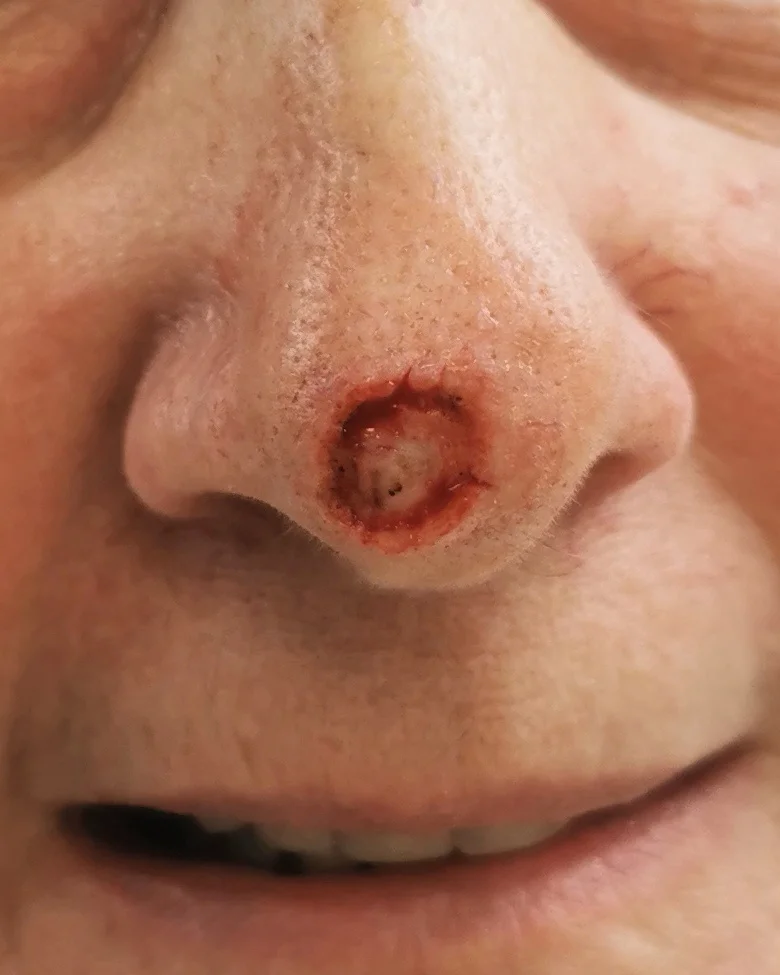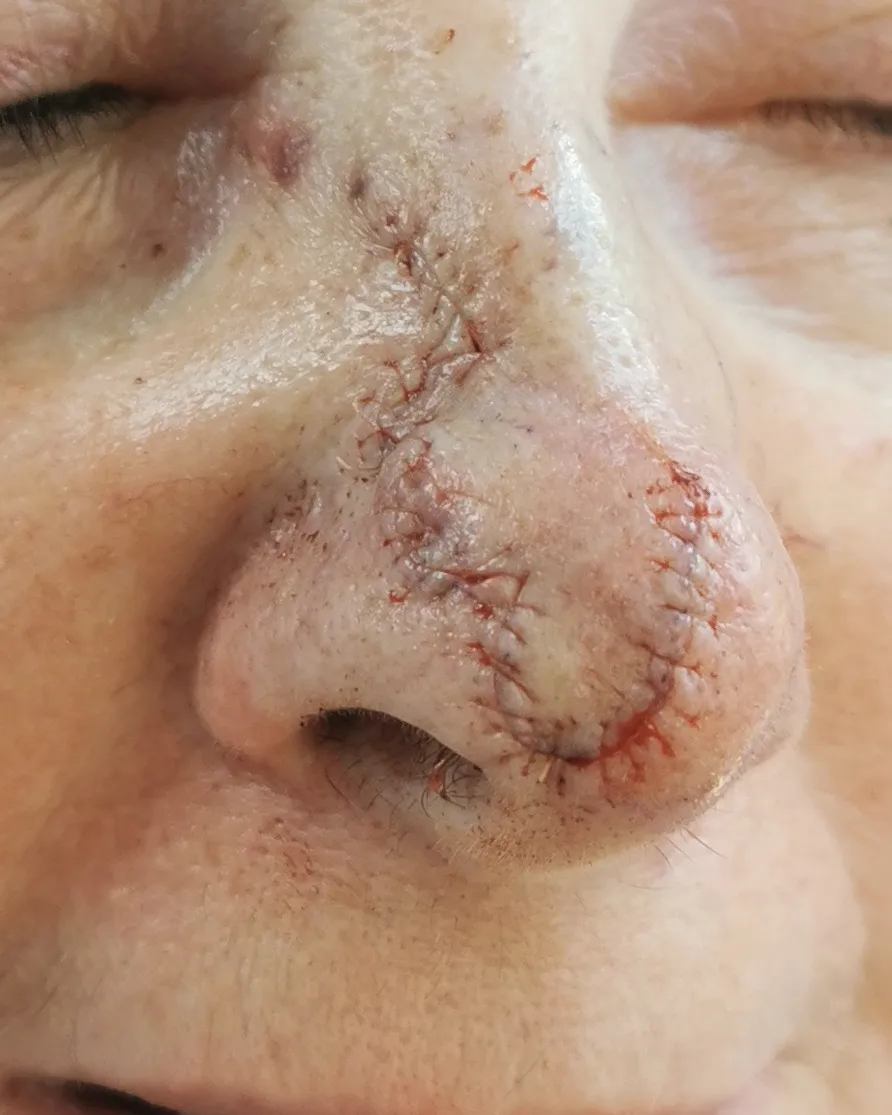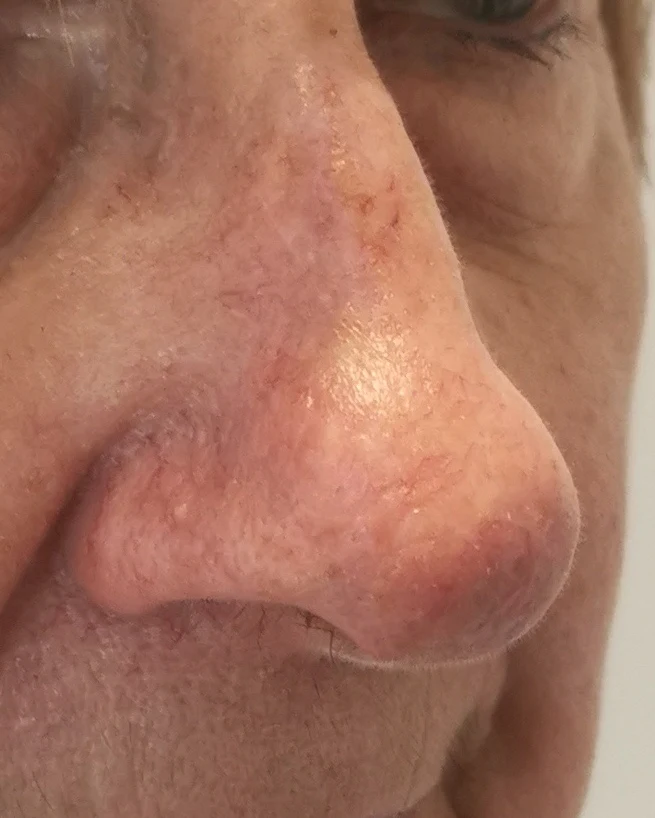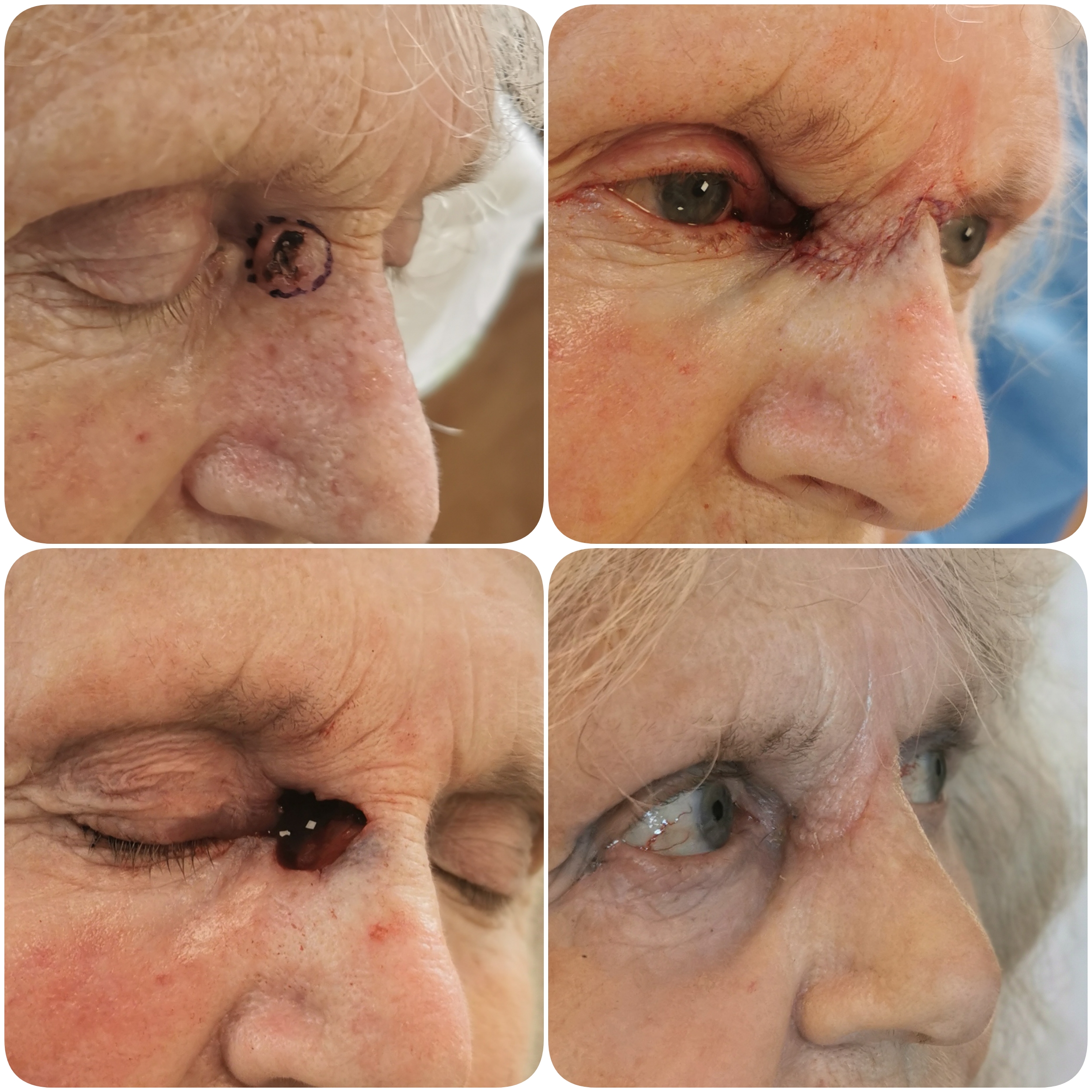Private Mohs Micrographic Surgery in the UK – Performed by Dr Toby Nelson at Wood MediSpa, Devon
Mohs micrographic surgery is the gold-standard technique for treating certain types of skin cancer, particularly basal cell carcinoma (BCC) and squamous cell carcinoma (SCC) located in cosmetically sensitive or high-risk areas, such as the nose, eyelids, lips, ears, and face.
If you are seeking private Mohs micrographic surgery in the UK, Consultant Dermatologist and Mohs Surgeon Dr Toby Nelson offers world-class care from Wood MediSpa, a state-of-the-art private surgical facility in Devon. Patients travel from across the UK, Ireland, and the Channel Islands for the precision, expertise, and exceptional environment offered here.
What Is Mohs Micrographic Surgery?
Mohs surgery is a specialised surgical technique in which skin cancer is removed layer by layer, with 100% of the margin examined under the microscope in real time. This allows for:
- Complete cancer removal
- Maximum preservation of healthy tissue
- Minimal scarring, especially important on the face
- Immediate reconstruction with optimal cosmetic outcomes
Developed in the 1930s by Dr Frederic Mohs, this method remains the most accurate and effective technique for removing BCC and SCC, especially when:
- The tumour is on the nose, eyelids, lips, ears, or face
- The cancer has recurred after previous treatment
- The tumour is aggressive, large, or located in younger patients
- Preserving healthy skin is crucial for function or appearance
Why Choose Private Mohs Surgery?
Many patients seek private Mohs surgery for:
✔ Faster Access
NHS waiting lists for Mohs can be long and unpredictable.
✔ Control Over Timing
Patients can choose treatment dates that fit around healing time, work, family, or important events.
✔ Superior Environment
Wood MediSpa offers a calm, discreet, and luxurious setting — ideal for facial surgery and post-operative recovery.
✔ Continuity of Care
You are treated exclusively by Dr Toby Nelson, from consultation to reconstruction and follow-up.
Although Mohs surgery is available on the NHS, delays and variable access lead many patients to opt for private care when accuracy, cosmetic outcome, and convenience matter most.
⭐ World-Class Mohs Surgery – Only at Wood MediSpa, Devon
Wood MediSpa is a purpose-built private surgical facility set within a restored Arts & Crafts manor, surrounded by 30 acres of tranquil grounds. It offers a level of privacy and comfort unmatched by a standard hospital environment.
Why patients travel from across the UK & Ireland to Wood MediSpa:
- Dedicated Mohs theatre and on-site histology laboratory
- Same-day microscopic tumour analysis
- Private, serene surroundings designed for recovery
- Freshly prepared meals and luxurious patient spaces
- Overnight accommodation available (pre-booked)
- On-site plastic surgery support when needed
- Easily accessible — only 25 minutes from Exeter, and close to the A30
This discreet, high-quality environment is ideal for patients undergoing Mohs surgery, particularly when the face is involved.
Your Mohs Surgeon: Dr Toby Nelson
Mohs surgery at Wood MediSpa is performed exclusively by Dr Toby Nelson, one of the UK’s most highly trained Mohs surgeons.
Credentials & Training
- Consultant Dermatologist specialising in skin cancer and reconstruction
- International Fellowship Training in Mohs Micrographic Surgery, Dermatopathology & Advanced Reconstruction
- Trained under Dr Paul Salmon and Dr Neil Mortimer in New Zealand — world leaders in Mohs surgery
- One of only a handful of European surgeons accredited by the American College of Mohs Surgery (ACMS) — the highest global standard for Mohs training
- Former founder and lead of the NHS Mohs service in Plymouth for 6 years, receiving regional referrals from
- Cornwall
- Exeter
- Taunton
- Torbay
- South West Peninsula
Patients consistently travel long distances specifically to be treated by Dr Nelson because of his expertise, aesthetic skill, and the confidence they have in his meticulous technique.
How Mohs Surgery Works – A Detailed Explanation
Mohs surgery is meticulous, precise, and technically demanding — but it offers unrivalled accuracy.
Here’s what happens during the process:
- Mapping & Marking the Cancer
The cancer is carefully outlined. A 2mm margin of normal skin is taken around the tumour.
- Transforming the Tissue to a 2D Plane
Dr Nelson relaxes the edges of the specimen so that the formerly 3D structure becomes flat.
This allows the entire peripheral and deep margins to be seen in a single microscopic plane.
- 100% Margin Assessment
Unlike traditional surgery, where less than 1% of the margin is checked (using the “bread-loafing” method days or weeks later), Mohs examines 100% of the margin on the same day.
- Precise Re-Excisions (If Needed)
If any cancer cells remain:
- They are mapped exactly
- Only the affected area is re-removed
- The process repeats until margins are fully clear
This ensures:
✔ Complete removal
✔ Maximum preservation of healthy skin
✔ Best cosmetic and functional outcomes
In Dr Nelson’s words: “If you are going to treat a skin cancer, it is better to treat it properly the first time rather than cut corners and end up with a bigger problem later.”
What to Expect During Your Mohs Surgery Journey
Initial Consultation
Dr Nelson reviews:
- Your medical history
- Biopsy report
- Skin cancer type
- Reconstruction options
On the Day of Surgery
- Local anaesthetic is applied
- The visible tumour and a thin rim of tissue are removed
- Tissue is analysed immediately on-site
If More Stages Are Required
Only the precise area where cancer remains is removed.
Most patients need 1–2 stages.
Reconstruction
Performed the same day using:
- Local flaps
- Skin grafts
- Linear closure
- Secondary intention (when appropriate)
Follow-Up & Recovery
You receive personalised aftercare, wound checks, and long-term monitoring.
Overnight Stay Options at Wood MediSpa
Patients travelling from across the UK & Ireland may choose to stay overnight in one of Wood MediSpa’s private rooms.
Benefits include:
- Peaceful environment for recovery
- Nursing support if required
- Reduced travel fatigue
- Next-day review with Dr Nelson
- Ideal for facial surgery patients
Overnight stays must be arranged in advance.
Travelling to Us – Easy Access via Exeter Airport
Wood MediSpa is ideally located for international and domestic patients.
Distance from Exeter Airport
- Only 10–15 minutes by taxi
- Private transport can be arranged on request
Flights to Exeter from the UK
Direct or seasonal flights operate from:
- London Heathrow
- London City
- London Gatwick
- Manchester
- Newcastle
- Edinburgh
- Glasgow
- Belfast
- Jersey
- Guernsey
This makes same-day travel for Mohs surgery highly practical.
Travelling from Ireland
Many Irish patients choose private Mohs surgery with Dr Nelson due to limited local access.
Dublin → Exeter
Direct seasonal flights or via London/Manchester.
Cork → Exeter
1-stop via London.
Belfast → Exeter
1-stop via Manchester or London.
Total typical journey time: 3–4 hours door to door.
Who Performs Mohs Micrographic Surgery?
Mohs surgery is performed by dermatologists with advanced, formal fellowship training in:
- Mohs micrographic surgery
- Dermatopathology
- Reconstructive surgery
Dr Nelson is one of the UK’s very few dermatological surgeons to have completed rigorous international fellowship training and is accredited by the American College of Mohs Surgery (ACMS) — placing him among the highest-trained Mohs surgeons in Europe.
Considering Private Mohs Surgery?
Private Mohs surgery may be right for you if:
- You are on an NHS waiting list
- You want faster access to treatment
- You need facial or cosmetically sensitive surgery
- You want continuity of care with a single expert surgeon
- You want surgery in a calm, private, comfortable environment
Book Your Private Mohs Consultation with Dr Toby Nelson
Mohs surgery is available exclusively at:
Wood MediSpa, Devon
Our team will help you arrange:
- Consultation with Dr Nelson
- Travel planning
- Overnight stay if required
- Pre-operative instructions
- Post-operative follow-up
Before & After









BOOK A CONSULTATION
For Wood MediSpa Okehampton please call: 01837 516629 | For The Duchy Hospital, Truro please call Claire on 07812 095769 or email: enquiries@tobynelsondermatology.com. A referral from your GP is preferred.
